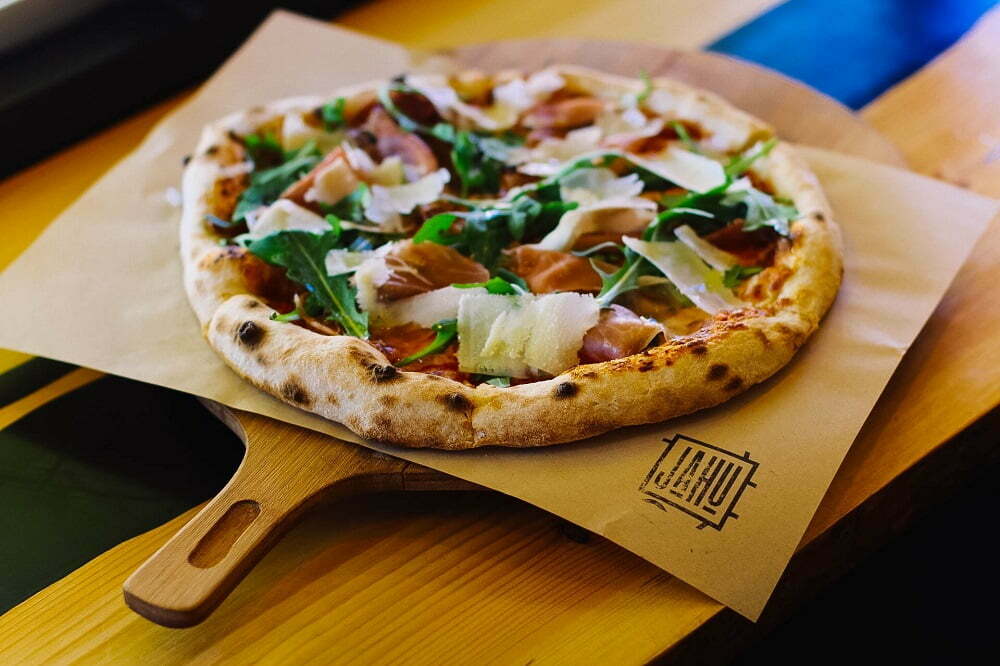
Pizza-A Questionable History
Pizza-A Questionable History What is the genuine history of pizza? I am sure every culture battles with it’s own claim to pizza fame.
Definitely there need to be an undiscovered sketch of the first pizza carved in a rock somewhere.

Well, whatever, it was fascinating to check out the numerous types of pizza and of some of the topping origins.
Some traced the first pizzas to early Greece where they topped pita bread with various foods like goat cheese and olives; others composed of Italians finally getting up the courage to taste the tomato.
Up up until about the 16th century Italians thought tomatoes were toxic.
I wonder who they got to try the first one? A Pagan?
In this nation it is normally accepted historically that Gennaro Lombardi opened the first pizzeria in New York City in 1895. Which Chicago rules supreme with the development of the deep meal pizza.
Another pizza style that is typically ignored, and fantastic is the Armenian meat pie. It is close to a meat covered pizza, but without a dripping sauce.
Armenian Meat Pie.

Filling:-
Integrate:
One pound of lean ground beef.
One big can of entire tomatoes crushed and drained pipes.
One medium yellow onion finely sliced
One little green bell pepper seeded and finely chopped.
One teaspoon crushed garlic or to taste.
One quarter cup chopped parsley
One tablespoon fresh mint leaves finely sliced
One tablespoon tomato paste
One half teaspoon each paprika and allspice.

Salt and pepper
One part of all set made pizza dough.
( Or you can find a from scratch dish anywhere on the internet or cookbook. Why work so hard?).
Location the discs on a lightly greased baking sheet and let increase a little. Spread the meat sauce over each disc coming close but not up to the edge.
Here’s a quick and easy vegetable pizza recipe.
2 bundles of supper rolls. Unroll and position flat on a baking sheet folding up the edges to form a crust edging. Bake for about 7 minutes and cool.
Topping:.
2 8 ounce packages of cream cheese softened with three quarter cup salad dressing and one quarter cup skim milk, one teaspoon dillweed and one teaspoon of basil. Garlic salt to taste.
Cut up broccoli, cauliflower, onions, red and green bell peppers, carrots and black olives and spray over top. Press this into the cheese topping slightly.
Pizza-A Questionable History 2022
Rules suggestion: Amy Vanderbilt says that while eating pizza with a fork and knife is okay, typically you can just go for it and utilize your hands, that’s what they’re there for. However use a napkin and forget utilizing the table linen.Pizza – A Questionable History
White wines that go excellent with pizza?Pizza – A Questionable History
Chardonnay, Beaujolais, and Chianti complement cheese pizzas.Pizza – A Questionable History
Pinot Grigio, Pinot Gris or White Zinfandel with pepperoni.Pizza – A Questionable History
Chardonnay or Syrah with sausage or mushroom and onion.Pizza – A Questionable History
Sauvignon Blanc with veggie pizza.Pizza – A Questionable History
Sauvignon Blanc or Reisling with Hawaiian.Pizza – A Questionable History
We choose ice cold beer on tap. Sorry.Pizza – A Questionable History
Find a pizza place in your community, or tell us about your favorite – go here to BestPlacetoEat.com.
Diningroom Diva is an author and precariously employed by BestPlacetoEat.com/ Restaurant Guide Communications.Pizza – A Questionable History
* And is wed to an Italian.
Certainly there need to be an undiscovered sketch of the very first pizza sculpted in a rock someplace. Well, whatever, it was fascinating to check out about the different types of pizza and of some of the topping origins.
Some traced the very first pizzas to early Greece where they topped pita bread with assorted foods like goat cheese and olives; others wrote of Italians finally getting up the nerve to taste the tomato.
Pizza has a long history. Flatbreads with toppings were taken in by the ancient Egyptians, Romans as well as Greeks.
(The latter ate a variation with herbs and oil, comparable to today’s focaccia.) Yet the modern native home of pizza is southwestern Italy’s Campania region, residence to the city of Naples.
Founded around 600 B.C. as a Greek negotiation, Naples in the 1700s as well as very early 1800s was a thriving waterside city.
Technically an independent kingdom, it was infamous for its crowds of functioning bad, or lazzaroni.
“The closer you got to the bay, the a lot more dense their populace, and also a lot of their living was done outdoors, in some cases in residences that were little more than a room,”
says Carol Helstosky, author of Pizza: A Worldwide Background and associate professor of history at the University of Denver.
These Neapolitans required low-cost food that could be taken in rapidly. Pizza– flatbreads with various garnishes, eaten for any type of meal as well as sold by street vendors or informal dining establishments– fulfilled this need.
“Judgmental Italian writers usually called their eating routines ‘horrible,'” Helstosky notes. These early pizzas taken in by Naples’ bad included the tasty garnishes cherished today, such as tomatoes, cheese, oil, anchovies and garlic.
SEE: Full episodes of The Food That Developed America online currently. New episodes premiere Sundays at 9/8c on HISTORY.
Italy unified in 1861, as well as King Umberto I as well as Queen Margherita checked out Naples in 1889. Legend has it that the taking a trip set
became bored with their constant diet regimen of French nouvelle cuisine and also asked for a selection of pizzas from the city’s Restaurant Brandi, the follower to Da Pietro restaurant, established in 1760.
The selection the queen took pleasure in most was called pizza mozzarella, a pie topped with soft white cheese, red tomatoes and also environment-friendly basil.
(Perhaps it was no coincidence that her favorite pie featured the colors of the Italian flag.) From then on, the story goes, that certain topping mix was referred to as pizza Margherita.
Queen Margherita’s blessing could have been the beginning of an Italy-wide pizza trend. But pizza would stay little known in Italy past Naples’ boundaries till the 1940s.
A sea away, though, immigrants to the USA from Naples were duplicating their reliable, crusty pizzas in New york city and also various other American cities, consisting of Trenton, New Sanctuary, Boston, Chicago and also St. Louis.
The Neapolitans were coming for manufacturing facility jobs, as did numerous Europeans in the late 19th and very early 20th centuries; they weren’t looking for to make a cooking declaration.
Yet fairly swiftly, the tastes as well as aromas of pizza started to intrigue non-Neapolitans and non-Italians.
Scroll to Continue
Advised for you
One of the very first recorded United States restaurants was G. (for Gennaro) Lombardi’s on Spring Road in Manhattan, licensed to sell pizza in 1905.
(Prior to that, the recipe was homemade or purveyed by unlicensed vendors.) Lombardi’s, still in operation today though no longer at its 1905 location,
“has the exact same stove as it did originally,” notes food movie critic John Mariani, author of Just how Italian Food Conquered the World.
Discussions over the finest slice in town can be warmed, as any kind of pizza fan understands. But Mariani credited three East Coastline pizzerias with remaining to
produce pies in the century-old practice: Totonno’s (Coney Island, Brooklyn, opened up 1924); Mario’s (Arthur Opportunity, the Bronx, opened 1919); as well as Pepe’s (New Place, opened up 1925).
As Italian-Americans, and also their food, moved from city to suburban area, east to west, specifically after The second world war, pizza’s popularity in the USA grew.
No longer viewed as an “ethnic” reward, it was significantly identified as quick, enjoyable food. Regional, decidedly non-Neapolitan variants emerged, eventually including California-gourmet pizzas covered with anything from grilled poultry to smoked salmon.
Postwar pizza finally reached Italy and also past. “Like jeans and rock and roll, the rest of the globe, consisting of the Italians, noticed pizza even if it was American,” clarifies Mariani.
Today global stations of American chains like Domino’s and also Pizza Hut flourish in around 60 different countries. Showing local preferences, global pizza garnishes can run the gamut from Gouda cheese in Curaçao to hardboiled eggs in Brazil.
Another pizza design that is frequently overlooked, and fantastic is the Armenian meat pie. It is close to a meat covered pizza, however without a dripping sauce.
The history of pizza,Kinds of pizza,Pizza past,The origin of pizza,







